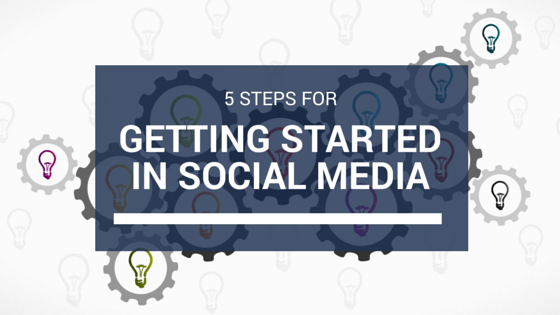Eighty-four percent of B2B marketers use some kind of social media marketing for business development, and a lot of that growth has taken place recently. Sixty-two percent of marketers said social media became more important in the last six months, and 72 percent have only been actively using social media marketing for a few months or less.
Given these impressive statistics, traditionally “less-sexy” industries such as industrial and manufacturing companies are eager to see what social media marketing can do for their business.
Does it have value, or is it a waste of time?
Like all new initiatives, they face a few challenges. They wonder if social media marketing can really deliver on those promises, and they aren’t sure about getting started in social media.
Fortunately, every B2B business can find an excellent use for social media if they target the right audiences with the right strategies.
The difficulty lies in knowing where and how to start. Today we’d like to introduce you to social media 101 for industrial and manufacturing companies. Here’s everything you need to know about identifying the right platform for you, building an effective profile, and figuring out what and how often to post.
Need help with a digital strategy for your industrial or manufacturing company? Learn more about our workshop customized for your business to show you how to get more leads and develop new business.
Summary
5 Steps for Getting Industrial Companies and Manufacturers Started in Social Media
- Identify the best platform for your business
- Build effective social media profiles
- Dig deep for social media content -- figure out what to post
- Establish a meaningful posting rhythm
- Go above and beyond social platforms
1. Identify the Best Platform for Your Industrial Business
When you’re getting started in social media marketing as an industrial and manufacturing company, the most important thing you can do is select social platforms where you can actually find your prospective clients. Depending on your industry, Pinterest will likely never be the best choice for your marketing budget. LinkedIn, however, with 259 million global, business-minded users, will almost always be a good idea. Carefully consider the pros and cons of the four major social media platforms before you commit to building a community on each.
For industrial and manufacturing companies, LinkedIn and YouTube are our go-to social media recommendations. B2B Video Marketing has helped us get results for several major manufacturing clients, and LinkedIn is a powerhouse for connecting CEOs, CMOs, and senior sales personnel with qualified, interested leads.
2. Build Effective Social Media Profiles
Much like every word on your website needs to be written for the right audience, your social media profiles need to reflect the unique value and personality of your business. If LinkedIn is the platform you’re moving forward with, start with a well-written personal profile. Then expand your efforts to your business page to include action-oriented headlines, a polished company summary, and consistent branding and language from your website. Take a moment to review LinkedIn’s best practices for company pages resources, as well.
3. Dig Deep for Social Media Content
Once you’ve identified the right platforms for your community, it’s time to answer the often frustrating question, “What should I post?” Start by brainstorming the unique perspective that your company brings to your industry.
- What will your customers find valuable?
- What do your customers want to read about?
- What will your customers be likely to share with their networks?
If you consider your products, services, and business from the perspective of what your customer needs from you, you can generate a lot of ideas with very little effort.
While industrial companies and companies in the manufacturing sector are traditionally considered “boring,” and “quiet,” they are actually particularly ripe for social media content because they’ve been inactive for so long. These smart but silent industries can bring their knowledge to their customers in a new way that bypasses the traditional company jargon in favor of interesting and engaging content.
One such example comes from KISSmetrics’ Neil Patel as he writes about an example B2B company that sells large vivarium misting systems to zoos, research universities, and animal theme parks:
“That sounds pretty boring. What the heck is a vivarium misting system? This is where the B2B needs to get creative. A vivarium misting system helps reptiles to survive in an environment that is different from their native environment. It’s going to help pythons thrive in a research environment so scientists can understand them. Do you see the unboring angle emerging? There may not be a lot of people interested in vivarium misting systems, but there are a lot of people interested in pythons, or rainforest preservation…”
Find the non-boring angle on how your company serves a larger public and tap into it for engaging social media content. Then those ideas can take the form of hundreds of different kinds of social media content that engages and entices your customers into a relationship.
Ready to Grow Your Industrial Manufacturing Business with Targeted Marketing?
Social media is powerful, but seeing real results requires a tailored strategy. That’s where we come in. With experience helping industrial and manufacturing companies, we know how to drive engagement and growth.
Whether you need lead generation, brand awareness, or stronger industry relationships, we’ve got you covered.
Schedule a conversation today
4. Establish a Meaningful Posting Rhythm
One of the most common questions we get about getting started in social media marketing is how often companies should update social media platforms. And most of our clients are afraid that the answer will be very involved and very time-consuming.
However, the Social Media Marketing Industry Report notes that marketers saw qualified leads from social marketing with as few as six hours per week. The lesson here is that social media marketing doesn’t need to be time-consuming to be effective. In fact, the more planning you put into it, the less time you will need to spend in implementation.
When you’re ready to set a posting schedule, research-based infographics like this one and tools like Tweriod can help you identify the most effective times for your network of prospective customers. When in doubt, start with one unique post per weekday on the major networking platforms and tweak it according to the results you experience.
For example, if you find that the increase in posting corresponds with an increase in engagement it’s a good sign that you could increase your posting to twice per day. Continue to increase until you notice a decreased engagement trend, and then return to the posting schedule that inspired the highest level of engagement.
5. Go Above and Beyond Social Platforms
If you limit your social media marketing to social media platforms, you may miss out on even more benefits of networking with your community. When you’re getting started in social media, don’t stop with your social channels. Go above and beyond the platforms by integrating your social media presence into your company blog, website, and trade shows. Each of these marketing tools offers a new way to fuel your social efforts, maximizing the value of the tool itself.
For example, trade shows provide tons of opportunities to connect with prospective customers in real life and follow up online. As you plan for your manufacturing trade show, identify a list of pre, during, and after-show tactics you can deploy via social media to make the most of the event. When you get back from the trade show, post an update to your company blog summarizing the event, outlining the speakers, and mentioning the partners that you met while you were there. Use this blog post to continue networking with clients and other businesses that attended the trade show to get a bigger reach than just your current social network.
Frequently Asked Questions
What’s the first step to launching social media for manufacturing?
The first step is identifying your goals and audience. Without clear objectives, your social media efforts will lack focus. Knowing your target audience ahead of time will help you determine what platforms to post on.
What are the best social media platforms for manufacturing companies to start with?
The best platform to start on is likely LinkedIn, since both you and your customers are probably there. If recruiting employees is a priority, then also posting to Facebook might be an option for you.
How can manufacturers and industrial companies use LinkedIn for lead generation?
- Build a strong company page: The LinkedIn company page should be fully optimized with a clear, professional description that communicates the company's expertise in the industrial or manufacturing sectors. Include relevant keywords (e.g., "manufacturing solutions," "industrial automation," "supply chain management") to improve visibility.
- Showcase products/services: Use the "Products" or "Services" section to highlight offerings relevant to potential clients, making it easy for visitors to understand what your company provides.
- Show visuals & case studies: Share rich media, including product videos, customer testimonials, and case studies that illustrate your value proposition.
- Consider targeted outreach with LinkedIn Sales Navigator: filter based on company and job title, and connect with them.
- Share industry insights and unique content: Regularly posting about trends in manufacturing or industrial technologies, such as automation, Industry 4.0, and supply chain resilience, positions your company as a thought leader. Insights or opinions on current manufacturing challenges, efficiency improvements, and innovations will attract engagement from relevant decision-makers.
What are some common mistakes manufacturers make on social media?
Common mistakes include not posting consistently, using the wrong platforms, failing to engage with followers, and not tracking the performance of social media efforts.







